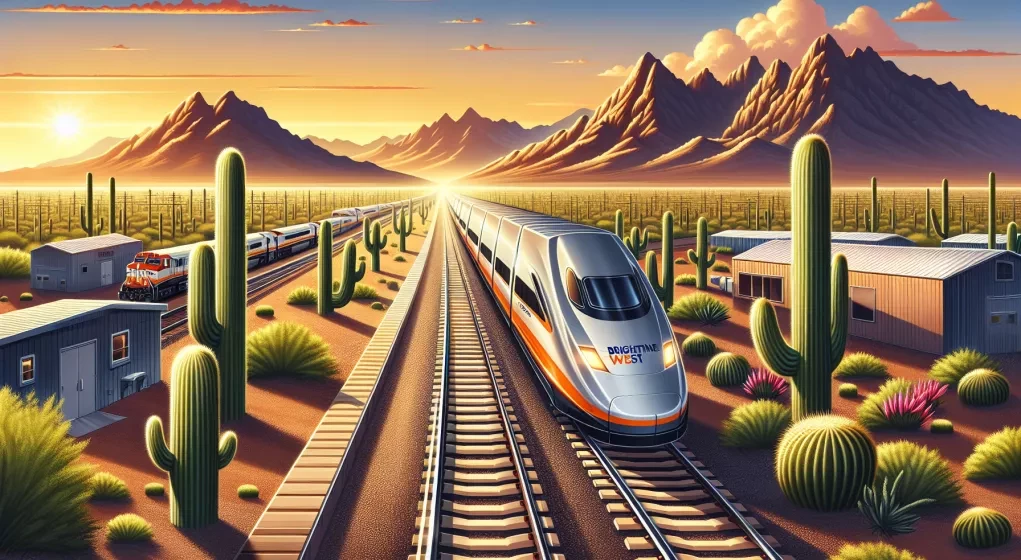In the heart of the American Southwest, a modern marvel is taking shape, promising to catapult travelers through the desert landscape at breathtaking speeds. Brightline West, a dream set in motion amidst the arid stretches between Las Vegas and Rancho Cucamonga, California, broke ground last month and has boldly announced its destined speed: a blistering 200 miles per hour.
Picture the scene: streamlined trains slicing through the winds, their sleek forms a blur to the drivers crawling along the I-15 median. This is the vision—a future where the exhilaration of Las Vegas is but a swift journey away, a future set to come alive by 2028.
Yet, amidst the fanfare of technology and progress stand questions—questions of feasibility, funding, and the final leg to Los Angeles. Secretary of Transportation Pete Buttigieg, with ceremonial spike and track at hand, proclaimed, “I am firmly convinced that once the first customer buys that first ticket to ride a high-speed rail on American soil, there will be no going back.” But can this high-stakes venture navigate the twists and turns on its path to reality?
The daunting figure of $12 billion looms large, half unclaimed, a financial frontier waiting to be tamed. The connectivity to Los Angeles hangs on a 45-minute thread, and with round-trip fares potentially hovering at $400, affordability calls from the distance.
Enter Harry Teng, UNLV’s professor of civil and environmental engineering, a mind carving the future of transport as a commissioner of the Nevada High Speed Rail Authority. His insights delve into the odyssey—from Tony Marnell II’s initial vision of a Vegas-to-LA bullet train in 2005 to today’s generous federal funding and tax-exempt bonds.
Yet, even Teng, armed with expertise, approaches the engineering challenges with reverence. Curving freeways and gusting desert winds summon concerns. The scorching summer heat softens steel like wax, demanding the innovation of trackside sensors to safeguard the rumbling engines of progress.
The Cajon Pass looms with its steep gradients, posing less of a conundrum than the elemental forces wrestled on this high-speed odyssey. Undeterred by the steep incline, the powerful locomotives will harness their might, defying the slope with the relentless push of modern engineering.
Naysayers may doubt, fretting over demand, cost per mile, and seating five in a car to beat the price of progress. Yet Teng sees flexibility—a dynamic market and a private enterprise with the luxury of sculpting its price. There are possibilities of differentiation, from luxury cars to coach seats, and discounted fares for veterans and seniors. The allure of party trains beckons—carriages of revelry where the stars of Hollywood can clink glasses en route to the desert oasis.
Even as passengers face the additional journey to Los Angeles, the smooth transition to Metrolink promises a seamless experience—a coordinated dance ensuring no traveler is left stranded.
When the dust settles and the tracks hum with the echoes of future journeys, Teng believes in the triumph of Brightline West. A fusion of ambition and meticulous planning, this rail service is not merely a connection between points on a map, but a beacon of American ingenuity and determination—a journey destined to succeed.






